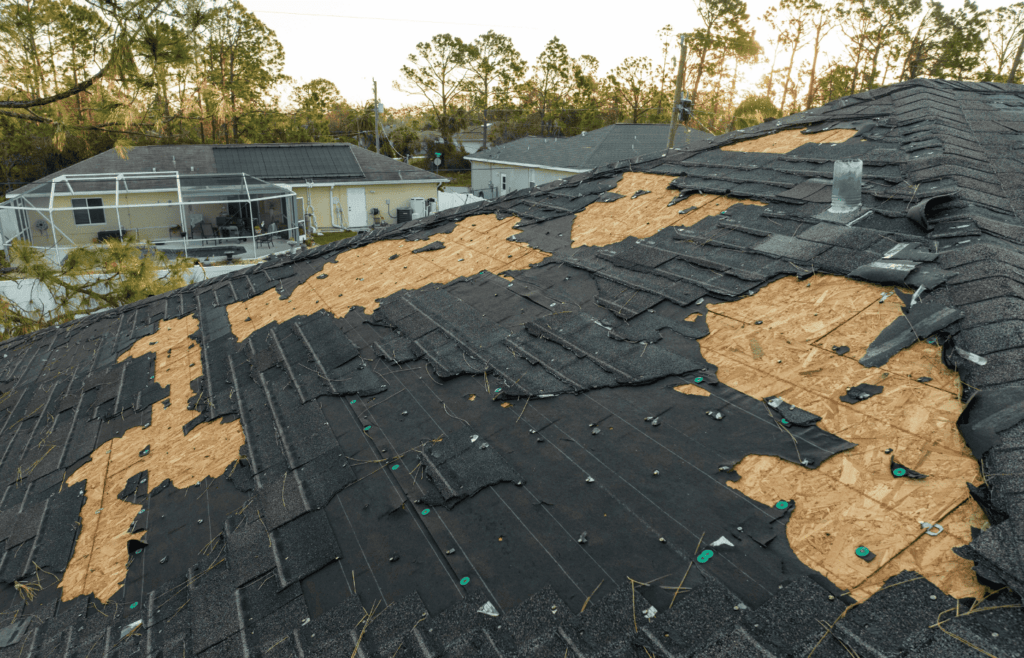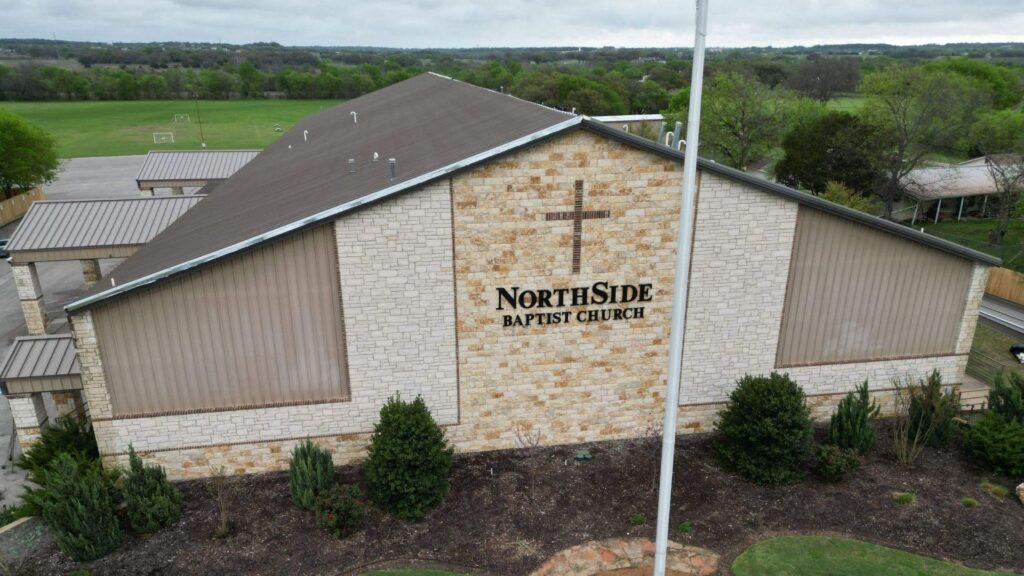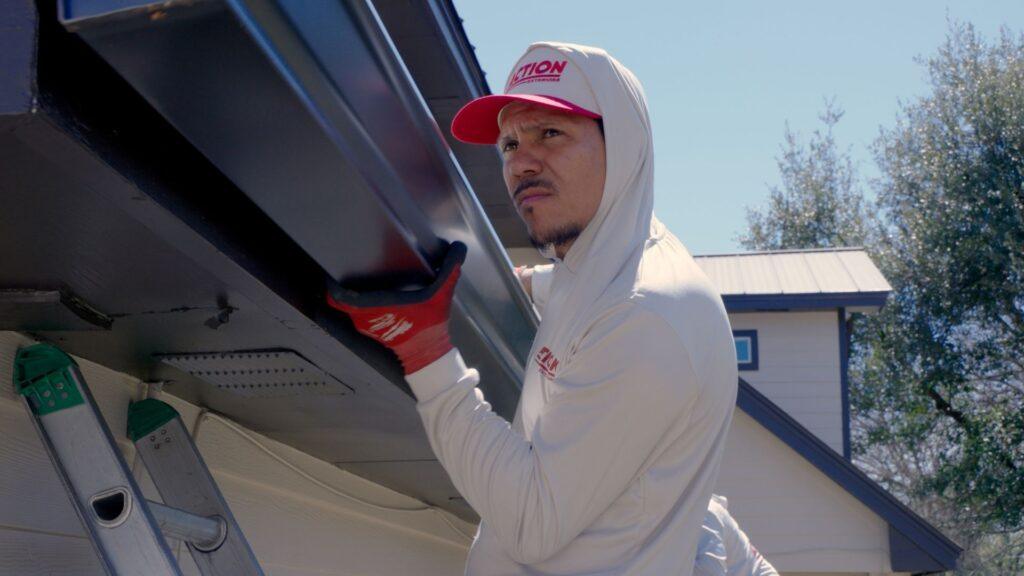How to Handle Roofing Storm Damage: A Step-by-Step Guide to Roof Protection for Your Home
Storms are a part of life, but when they strike, the damage can leave homeowners feeling helpless and overwhelmed. The sky darkens, the winds pick up speed, and the rain relentlessly pounds your home. After the storm passes, the last thing you want to see is damage to your roof. It’s one of the most vital parts of your home, protecting you from the harsh elements. But when nature strikes back, it’s essential to know how to respond. Whether you’re dealing with missing shingles, leaks, or more severe structural damage, it’s crucial to act fast for roof protection and ensure the safety of your loved ones.
In this guide, we’ll explore how to handle roof protection, roofing storm damage, from assessing the destruction safely to repairing it effectively. By the end, you’ll know how to handle the aftermath, communicate with your insurance provider, and hire the right contractor to restore your home. Let’s dive in!

Assessing Roofing Storm Damage Safely
The first step after a storm is to assess the damage, but safety is paramount. Never rush to climb onto your roof immediately after a storm. Not only is it dangerous, but you might make the situation worse. The last thing you want is to add to the damage while trying to repair it yourself. Instead, follow these guidelines to assess the storm damage from the safety of the ground:
Use Binoculars or a Camera
Take a pair of binoculars or a camera with a zoom lens to closely examine your roof. From a safe distance, you can spot damaged or missing shingles, debris on the roof, or any other obvious issues. Look for areas where shingles may have been blown off or where they are curled and lifting. These are signs that the storm’s impact could have compromised your roof. Pay close attention to any flashing around vents, skylights, or chimneys, as these are common areas for leaks and damage.
In addition to checking for missing or damaged shingles, use your binoculars or camera to look for debris that could be lodged on your roof. Tree branches, fallen power lines, or large objects can pose a threat not only to your roof but also to the structure of your home. If you notice any objects resting on your roof, do not attempt to remove them on your own. Contact a professional roofing contractor to safely clear debris and inspect your roof for further damage.
Check for Structural Damage
The storm may have caused significant structural damage to your roof, especially if there were high winds or hail. It’s important to check the roof’s overall integrity. Look for signs of sagging or unevenness in the roofline, which can be indicators that the underlying structure has been compromised. Check the perimeter of your roofline and any areas around chimneys or vents. Look for dents in metal roofing, punctures in shingles, or cracks in your flashing.
A serious issue to watch for is the presence of leaks or water stains on your ceilings. If water has entered your home, it can cause significant damage to insulation, drywall, and flooring. If you notice any wet spots or dripping water inside your home, it’s crucial to act quickly. These areas of concern might not only indicate a minor leak but could also suggest significant damage to your roof that requires immediate attention.
Document the Damage
Take plenty of pictures of the damage. A visual record will be helpful when discussing repairs with your insurance company or contractor. It will also be essential if you need to file a claim for storm damage. Photographs and videos are great tools to demonstrate the extent of the damage and serve as evidence when negotiating with insurance adjusters. Be sure to capture all angles of the roof, including close-up shots of damaged areas and wider views that show the roof’s overall condition.
Documentation can also include detailed notes about the storm’s severity and the type of damage observed. For example, note if the storm involved high winds, hail, or heavy rainfall, as this will help a contractor or insurance agent understand the nature of the damage. This information can also guide the type of repairs needed and help you avoid unnecessary delays during the claims process.
Finally, remember to stay cautious while assessing the damage. If you spot significant damage or suspect that there could be hidden structural issues, contact a professional roofing contractor as soon as possible. They can perform a thorough inspection and provide you with a safe and accurate evaluation of the situation.

Understanding Your Insurance Coverage for Storm Damage and Roof Protection
When a storm hits and damages your roof, your insurance coverage plays a critical role in helping restore your home. However, not all policies are the same, so understanding your coverage is essential before you proceed with repairs. Ensuring proper roof protection through your insurance can save you a lot of stress and potentially large expenses. Let’s break down the key steps to take when understanding your insurance coverage for storm damage and how roof protection factors into your claim.
Review Your Policy
Insurance policies can be tricky to understand, but it’s vital to know what’s covered. Check if your policy includes storm damage and roof protection, and take note of whether it covers repairs, replacements, or just the depreciated value of your roof. Some insurance policies cover only the cost to repair damage caused by a storm, while others may cover a complete roof replacement depending on the severity of the damage. Understanding your policy’s details ensures that you’re not caught off guard when it’s time to file a claim.
Additionally, check if your policy includes roof protection options. Many homeowners’ insurance policies offer additional coverage for roof repairs or replacements, specifically for issues like storm damage. If you’re unsure about the specifics of your roof protection coverage, contact your insurance provider for clarification. This way, you’ll have a clear understanding of your coverage and can ensure your roof is adequately protected, financially speaking, in case of storm damage.
Document Everything
As mentioned before, taking detailed photos, videos, and notes of the storm damage is a crucial step. Documenting everything not only protects you in the claims process but can also help establish that you’ve taken necessary precautions for roof protection. Capture a wide shot of your roof, as well as close-up images of specific damage such as missing shingles, broken flashing, or any structural damage. This is vital to help assess the full extent of the damage for insurance purposes and roof protection.
Also, include any damage to your siding, windows, or other exterior parts of your home that might have been affected by the storm. The more comprehensive your documentation is, the better. This detailed record will serve as evidence when working with your insurance company and provide proof that you’ve taken steps to ensure roof protection after the storm.
Contact Your Insurance Provider
Once you’ve assessed the damage and documented everything, reach out to your insurance company. File your claim promptly to avoid delays. Insurance adjusters will schedule an inspection of your home, but having the documentation prepared beforehand can help speed up the process. By initiating the claim early, you’ll be in a better position to ensure that your roof protection coverage is applied properly and that repairs can begin as soon as possible.
Be sure to inform your insurance company about the need for roof protection repairs in the claim. Highlight any areas of concern that need immediate attention and make sure they’re aware of the storm’s severity. The quicker you act, the sooner your insurance company can evaluate the damage and authorize the necessary roof repairs or replacement.
Stay Informed About Roof Protection Options
A comprehensive understanding of your insurance coverage helps ensure a smoother recovery and can make the difference between a quick resolution and a lengthy back-and-forth with your insurer. Roof protection is an important aspect of your coverage that shouldn’t be overlooked, and by knowing your policy inside and out, you’re in a stronger position to advocate for the repairs you need. If your current policy doesn’t provide sufficient roof protection or storm damage coverage, consider updating your policy to add enhanced protection.
Storm damage can be overwhelming, but by following these steps, you’ll be better equipped to handle the aftermath. From reviewing your insurance policy to documenting damage and contacting your insurer, every step is crucial in ensuring the restoration of your roof and home. If you need assistance with roofing storm damage or would like expert guidance on roof protection, don’t hesitate to reach out to a professional. Ensuring your roof is properly protected and repaired after a storm is an investment in the long-term safety and value of your home!

Choosing the Right Roofing Contractor After Storm Damage
When it comes to repairing your roof after a storm, the choice of contractor is crucial not just for roof protection but for your home. This isn’t just about fixing a roof; it’s about protecting your home and restoring its safety. Choosing a roofing contractor who is licensed, insured, and experienced with storm damage repairs will give you peace of mind that the job will be done right.
Do Your Research
Start by researching local contractors who specialize in roofing storm damage. Look for reviews, ratings, and testimonials from past customers. You can also ask friends, family, or neighbors for recommendations. A reliable contractor should be able to provide you with references and a portfolio of their past work.
Ask the Right Questions
When contacting potential contractors, make sure to ask the following questions:
- Are you licensed, insured, and bonded?
- Do you have experience with storm damage repairs?
- Can you provide a written estimate for the repairs?
- What materials do you recommend for my roof?
- How long will the repair process take?
By asking these questions, you’ll be able to narrow down your choices to reputable contractors who can handle the specific needs of your roof.
Get Multiple Quotes
Always get at least three quotes from different contractors. This will help you compare pricing, materials, and the scope of work each contractor proposes. Keep in mind that the cheapest option may not always be the best. Look for contractors who offer a fair price and provide detailed information about the repairs needed.
Check for Warranties and Guarantees
A good roofing contractor should offer a warranty on their work and roof protection. This protects you in case any issues arise after the repairs are completed. Be sure to ask about the warranty details before signing a contract.
Temporary Fixes vs. Long-Term Solutions for Roof Protection After Storm Damage
After a storm, the damage to your roof can feel overwhelming. You may be tempted to apply a quick fix—throwing a tarp over the roof or nailing down loose shingles. While these temporary fixes can help prevent further water damage in the short term, they don’t address the root cause of the problem. In fact, relying on temporary fixes could lead to more expensive repairs down the road. Let’s take a closer look at how temporary fixes compare to long-term solutions when it comes to protecting your roof and ensuring its longevity.
Temporary Fixes: A Quick Stopgap for Roof Protection
When you’re dealing with the immediate aftermath of a storm, it’s essential to act fast. Temporary fixes can help you avoid further damage, especially when your roof has significant damage. For instance, placing a tarp over holes or damaged areas can provide short-term roof protection from the elements. Similarly, nailing down loose shingles can help prevent them from being blown away by the wind, further exposing your roof to water and debris.
However, while these temporary fixes may provide some relief, they are just stopgap measures. The tarp, for example, may not offer the best protection against heavy rain or winds, and nails holding down loose shingles could come loose again in future storms. These fixes may delay further damage but won’t restore the structural integrity of your roof.
The goal of temporary fixes is to minimize water intrusion and further damage until you can schedule professional repairs. However, these fixes are not a replacement for comprehensive, long-term roof protection, which addresses the underlying issues that caused the damage in the first place.
Long-Term Solutions: Investing in Permanent Roof Protection
While temporary fixes may buy you some time, long-term solutions are essential for the longevity of your roof and the overall protection of your home. It’s important to invest in quality repairs that will restore your roof’s integrity and provide reliable protection for years to come.
One of the first steps in implementing long-term solutions is replacing damaged shingles. If shingles are missing or damaged, they need to be replaced to ensure your roof is fully covered and resistant to the elements. Additionally, fixing leaks and repairing any structural damage caused by the storm is necessary for preventing future issues.
Beyond just repairing the damage, long-term solutions often involve upgrading your roof to more durable materials. Storm-resistant features, like impact-resistant shingles, can help fortify your roof against future storms. These materials are designed to withstand extreme weather conditions, minimizing the risk of damage during future storms. Reinforcing your roof with stronger materials can significantly improve its resilience, providing enhanced protection for your home.
A professional contractor will assess the damage and provide recommendations for roof protection solutions that will last for years to come. They’ll guide you through the repair process, ensuring that your roof is fully restored and reinforced to handle the challenges of future storms.
The Importance of Roof Protection Upgrades
After experiencing storm damage, it’s wise to consider upgrading your roof for better protection in the future. Installing high-quality materials like impact-resistant shingles or adding storm-resistant features can make a significant difference in preventing future storm damage. These upgrades may come with an upfront cost, but they are a wise investment in your home’s long-term protection.
By choosing durable materials and reinforcing your roof, you can minimize the risk of damage during future storms and increase the overall lifespan of your roof. These long-term solutions provide peace of mind, knowing that your home is better prepared for whatever the next storm may bring.
Make the Smart Choice for Your Roof Protection
When it comes to protecting your home from storm damage, temporary fixes may offer immediate relief, but long-term solutions are essential for ensuring lasting roof protection. Investing in quality repairs, upgrading materials, and reinforcing your roof will not only address the damage from the recent storm but also improve your roof’s ability to withstand future weather events. Don’t wait for another storm to take a toll on your home. Contact a professional roofing contractor to evaluate your roof, discuss roof protection options, and ensure that your home remains safe and secure for years to come!
Preventive Measures to Protect Your Roof from Future Storms
Once your roof is repaired, it’s time to think about ways to prevent future storm damage. While no roof can be entirely storm-proof, there are steps you can take to make it more resilient.
Upgrade to Storm-Resistant Materials
If your roof sustained significant damage during the storm, consider upgrading to stronger, more storm-resistant materials. Impact-resistant shingles and metal roofing are great options for homes in storm-prone areas. These materials can better withstand hail, high winds, and flying debris, reducing the risk of future damage.
Maintain Your Roof Regularly
Regular roof maintenance is essential in preventing storm damage. Have a professional roofer inspect your roof at least once a year to identify any weak spots, damaged shingles, or issues that could compromise its performance. Catching problems early can save you money and prevent bigger issues down the road.
Trim Trees and Remove Debris
Trees and branches near your roof can pose a significant risk during a storm. Trim overhanging branches to prevent them from falling on your roof during high winds. Additionally, make sure to remove any debris or leaves from gutters and downspouts to prevent water damage.
Reinforce Your Home’s Structural Integrity
In some cases, reinforcing the structure of your home may be necessary. Adding extra support to your roof’s trusses or installing hurricane straps can make your home more resistant to wind damage. These upgrades can help protect your roof from the worst that nature has to offer.
How Action Exteriors Can Help Restore Your Roof
When a storm damages your roof, the recovery process can be stressful. But with the right support, you can restore your home and protect it from future damage. That’s where Action Exteriors comes in. We specialize in storm damage repairs, offering professional roofing services to homeowners in need of immediate and long-term solutions.
Our team of experts will assess your roof, provide a comprehensive repair plan, and work with your insurance company to ensure that you get the coverage you deserve. With years of experience in roofing and storm damage restoration, we’re committed to delivering high-quality, reliable services to help you get your home back to its best.
Get in Touch with Action Exteriors Today!
Don’t wait for the next storm to hit before you take action! Contact Action Exteriors now to schedule your roofing inspection and get your roof ready for whatever comes next. With our expertise and dedication, you can rest assured that your roof is in good hands.
Posted in